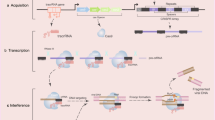Abstract
Foreign protein production levels in two recombinant Chinese hamster ovary (CHO) cell lines were compared in cells transfected with different expression vectors. One vector pNL1 contained the gene for neomycin resistance (neo r) and thelacZ gene which codes for intracellular β-galactosidase, with both genes controlled by the constitutive simian virus (SV40) promoter. The other vector CDβG contained the amplifiabledhfr gene andlacZ gene, controlled by the constitutive SV40 and cytomegalovirus (CMV) promoters, respectively. Cell growth and β-galactosidase expression were compared quantitatively after cells were selected in different concentrations of the neomycin analog G418 and methotrexate, respectively. A 62% reduction in growth rate occurred in recombinant CHO cells in which thelacZ anddhfr genes were highly amplified and expressed. In contrast, the combined effects of the unamplifiedneo r gene andlacZ gene expression on the growth kinetics were small. Any metabolic burden caused bylacZ gene expression, which was evaluated separately from the effect ofneo r gene expression, must be negligible, as higher expression of β-galactosidase (1.5×10−6 units/cell) occurred in unamplified cells compared to the cells in whichlacZ was amplified by thedhfr-containing vector (3×10−7 units/cell). Thus, the main factor causing severe growth reduction (“metabolic burden”) in cells containing the amplifieddhfr gene system was not overexpression of β-galactosidase butdhfr andlacZ gene co-amplification anddhfr gene expression.
Similar content being viewed by others
References
Alt FW, Kellems RE, Bertino JR and Schimke RT (1978) Selective multiplication of dihydrofolate reductase genes in methotrexate-resistant various of cultured murine cells. J. Biol. Chem. 253: 1357–1370.
Beach LR and Palmiter RD (1981) Amplification of the matallothionein-I gene in cadmium-resistant mouse cells. Proc. Natl. Acad. Sci. USA 78: 2110–2114.
Bradley WEC (1983) Mutation at autosomal loci of Chinese hamster ovary cells: Involvement of a high-frequency event silencing two linked alleles. Mol. Cell Biol. 3: 1172–1181.
Geyer PK and Johnston LF (1984) Molecular cloning of DNA sequences complementary to mouse thymidylate synthase messenger RNA. J. Biol. Chem. 259: 7206–7211.
Gu MB, Kern JA, Todd P and Kompala DS (1992) Effect of amplification ofdhfr andlacZ genes on growth and β-galactosidase expression in suspension cultures of recombinant CHO cells. Cytotechnology 9: 237–245.
Gu MB, Todd P and Kompala DS (1993) Foreign gene expression (β-galactosidase) during the cell cycle phases in cerombinant CHO cells. Biotechnol Bioeng 42: 1113–1123.
Gu MB (1994) Foreign gene overexpression in recombinant mammalian cells: metabolic burden and cell cycle analyses. Ph. D. dissertation. University of Colorado, Boulder, Colorado, USA.
Hoeck W, Hofer P and Groner B (1992) Overexpression of the glucocorticoid receptor represses transcription from hormone responsive and non-responsive promoters. J. Steroid Biochem. Molec. Biol. 41: 283–289.
Huper G, Mark JR, Wiener JR and Iglehart JD (1992) Relative promoter activity in human mammary epithelial cells assayed by transient expression.In Vitro Cell Dev. Biol. 28A: 730–734.
Kaufman RJ, Wasley LC, Spiliotes AJ, Gossels SD, Latt SA, Larsen GR and Kay RM (1985) Coamplification and coexpression of human tissue-type plasminogen activator and murine dihydrofolate reductase sequences in Chinese hamster ovary cells. Mol. Cell Biol. 5: 1750–1759.
Kaufman RJ, Wasley LC and Dorner AJ (1988) Synthesis, processing, and secretion of recombinant human factor VIII expressed in mammalian cells. J. Biol. Chem. 263: 6352–6362.
Pendse G, Karkare S and Bailey JE (1992) Effect of cloned gene dosage on cell growth and Hepatitis B surface antigen synthesis and secretion in recombinant CHO cells. Biotechnol. Bioeng. 40: 119–129.
Ricketts MH, Chiao E, Hu MC and Chung BC (1992) Amplification of P450c21 expression in cultured mammalian cells. Biochem. Biophys. Res. Comm. 186: 426–431.
Sasaki H, Bothner B, Dell A and Fukuda M (1987) Carbohydrate structure of erythropoietin expressed in Chinese hamster ovary cells by a human erythropoietin cDNA. J. Biol. Chem. 262: 12059–12076.
Scahill SJ, Devos R, Heyden JV and Fierrs W (1983) Expression and characterization of the product of a human interferon cDNA gene in Chinese hamster ovary cells. Proc. Natl. Acad. Sci. USA 80: 4654–4658.
Schimke RT, Kaufman RJ, Alt FW and Kellems RE (1978) Gene amplification and drug resistance in cultured murine cells. Science 202: 1051–1055.
Takeuchi M, Inoue N, Strickland TW, Kubota M, Wada M, Shimizu R, Hoshi S, Kozutsumi H, Takasaki S and Kobata A (1989) Relationship between sugar chain structure and biological activity of recombinant human erythropoietin produced in Chinese hamster ovary cells. Proc Natl Acad Sci USA 86: 7819–7822.
Weymouth LA and Barsoum J (1986) Genetic Engineering in Mammalian Cells. In: Thilly WG (ed) Mammalian Cell Technology. Butterworth Publishers, MA, USA, pp. 9–62.
Wurm FM (1990) Integration, amplification, and stability of plasmid suquences in CHO cell cultures. Biologicals 18: 159–164.
Young AP and Ringold GM (1983) Mouse 3T6 cells that overproduce glutamine synthetase. J. Biol. Chem. 258: 11260–11266.
Author information
Authors and Affiliations
Rights and permissions
About this article
Cite this article
Gu, M.B., Todd, P. & Kompala, D.S. Metabolic burden in recombinant CHO cells: effect ofdhfr gene amplification andlacZ expression. Cytotechnology 18, 159–166 (1995). https://doi.org/10.1007/BF00767763
Received:
Accepted:
Issue Date:
DOI: https://doi.org/10.1007/BF00767763




